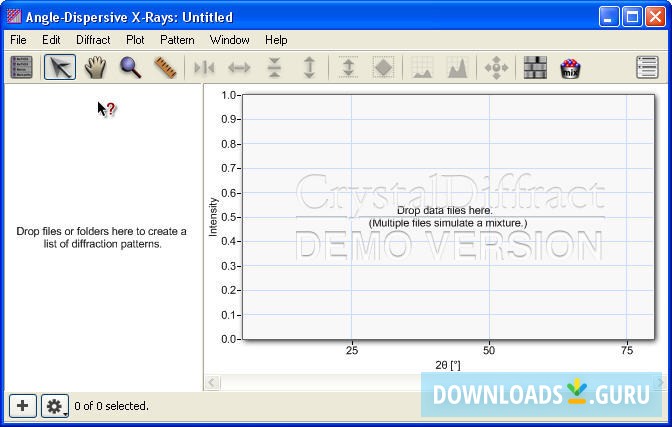


It makes the best-looking crystal structures imaginable.

#Crystaldiffract manual manual#
CrystalMaker also includes a companion program, CrystalDiffract LE, that predicts the x-ray diffraction pattern for a given crystal structure (researchers will probably want to get the upgrade ($215) to CrystalDiffract Pro, which offers more options and diffraction types).ĬrystalMaker is easy to learn, and includes the most comprehensive and best-produced manual I’ve seen for a science product in years, but oddly for scientific software, its real attraction is aesthetic. The user can specify display in space-filling, ball-and-stick, wireframe, and polyhedral modes, impose surface plots on the ball-and-stick display, annotate particular atoms in the crystal, and switch around instantly among all these modes.īesides building crystals from your own data table, the program imports many different data file formats - a great help in the somewhat bewildering world of incompatible molecular database files (CCL, Chem3D, CIF, CSSR, FDAT, ICSD, PDB, SHELX, STRUPLO, and MacMolecule). The procedure typically starts with a user entering atoms and their coordinates in a crystal unit cell, using CrystalMaker’s crystal data editor, which speeds up data entry quite a bit. CrystalMaker 4.0 specializes in building and displaying such images of crystal structures, assembled by “repeating” molecules many times at precise distances and angles. From huge DNA fragments to small molecules like aspirin, hard information about chemical structure comes from a method called x-ray diffraction, applied typically to small samples of crystalline material.


 0 kommentar(er)
0 kommentar(er)
